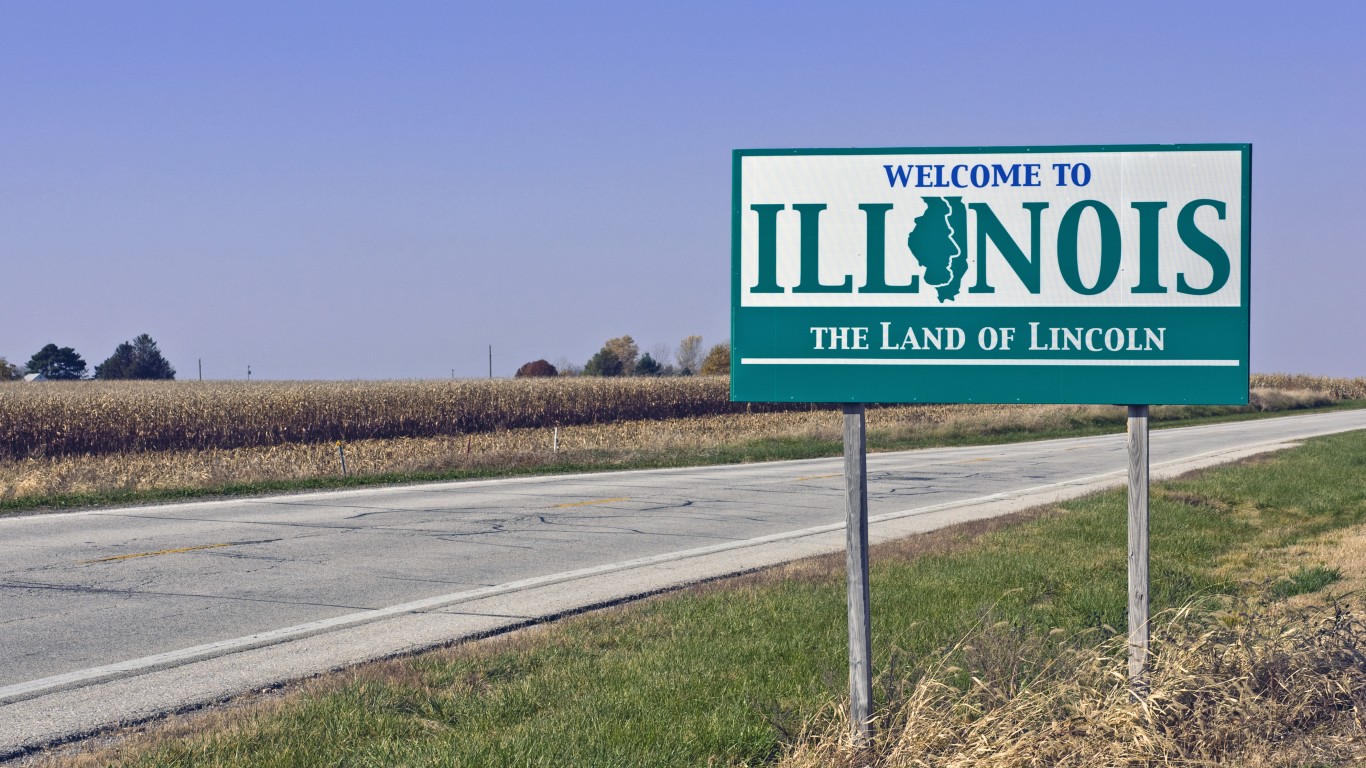

Cancer affects nearly all Americans, touching the lives of those fighting the disease, those who support them, or those who have lost someone close to them. Over the decades since President Richard Nixon declared a war on cancer in 1971, tremendous progress has been made in detecting and treating the disease — but a cure remains elusive.
According to government research group the National Cancer Institute, there will be approximately 1.7 million cancer diagnoses and more than 600,000 deaths from the disease in the United States in 2018. While cancer death rates have been declining for years, diagnoses are expected to rise to nearly 2 million a year by 2020. The increase is largely due to the ongoing growth and aging of the U.S. population. At this rate, cancer soon will be the leading cause of death in the United States, according to the Centers for Disease Control and Prevention (CDC).
The likelihood of being diagnosed with cancer depends on a range of factors that contribute to large variations in cancer incidence between states. 24/7 Wall St. reviewed the latest cancer diagnosis rates in every state.
When comparing state cancer diagnosis rates, it is important to note that the conditions leading to cancer diagnosis vary by the disease type. In an interview with 24/7 Wall St., Eric Feuer, chief of statistical research with the National Cancer Institute, said, “Every different cancer has its own profile of risk factors.”
Alcohol consumption, smoking, obesity, as well as income levels, urban living, pollution, and other behaviors and factors, can all increase the risk of a variety of cancers. And some behaviors and factors drive up the incidence of certain cancers more than others. For example, lung cancer, which is more common in low-income populations, is most closely related to smoking rates. Breast cancer, by contrast, which is screened for and diagnosed at higher rates in higher income locales, is associated with obesity more than with smoking as well as other risk factors such as age of first pregnancy.
We also reviewed overall cancer mortality rate, breast cancer incidence rate, and lung cancer mortality rate, as well as each state’s adult smoking rate.
Click here to see the incidence of cancer in every state.
Click here to see our methodology and detailed findings.

50. Nevada
> Cancer diagnoses per 100K: 348.8
> Breast cancer diagnoses per 100K: 104.7 (2nd lowest)
> Cancer deaths per 100K: 157.8 (21st lowest)
> Lung cancer deaths per 100K: 41.7 (25th highest)
> Adults who currently smoke: 16.5% (20th lowest)
[in-text-ad]

49. New Mexico
> Cancer diagnoses per 100K: 366.2
> Breast cancer diagnoses per 100K: 107.8 (3rd lowest)
> Cancer deaths per 100K: 143.5 (7th lowest)
> Lung cancer deaths per 100K: 29.5 (3rd lowest)
> Adults who currently smoke: 16.6% (21st lowest)

48. Arizona
> Cancer diagnoses per 100K: 377.3
> Breast cancer diagnoses per 100K: 110.9 (4th lowest)
> Cancer deaths per 100K: 141.1 (5th lowest)
> Lung cancer deaths per 100K: 34.5 (9th lowest)
> Adults who currently smoke: 14.7% (13th lowest)

47. Colorado
> Cancer diagnoses per 100K: 384.3
> Breast cancer diagnoses per 100K: 123.4 (19th lowest)
> Cancer deaths per 100K: 134.9 (3rd lowest)
> Lung cancer deaths per 100K: 27.7 (2nd lowest)
> Adults who currently smoke: 15.6% (17th lowest)
[in-text-ad-2]

46. Wyoming
> Cancer diagnoses per 100K: 391.9
> Breast cancer diagnoses per 100K: 104.0 (the lowest)
> Cancer deaths per 100K: 139.7 (4th lowest)
> Lung cancer deaths per 100K: 32.2 (6th lowest)
> Adults who currently smoke: 18.9% (17th highest)

45. Texas
> Cancer diagnoses per 100K: 396.0
> Breast cancer diagnoses per 100K: 112.2 (5th lowest)
> Cancer deaths per 100K: 149.6 (10th lowest)
> Lung cancer deaths per 100K: 35.0 (12th lowest)
> Adults who currently smoke: 14.3% (10th lowest)
[in-text-ad]

44. Alaska
> Cancer diagnoses per 100K: 397.3
> Breast cancer diagnoses per 100K: 122.0 (16th lowest)
> Cancer deaths per 100K: 161.1 (25th highest)
> Lung cancer deaths per 100K: 42.5 (23rd highest)
> Adults who currently smoke: 19.0% (16th highest)

43. California
> Cancer diagnoses per 100K: 398.0
> Breast cancer diagnoses per 100K: 121.4 (14th lowest)
> Cancer deaths per 100K: 143.5 (7th lowest)
> Lung cancer deaths per 100K: 30.0 (4th lowest)
> Adults who currently smoke: 11.0% (2nd lowest)

42. Oregon
> Cancer diagnoses per 100K: 399.6
> Breast cancer diagnoses per 100K: 115.6 (8th lowest)
> Cancer deaths per 100K: 160.4 (25th lowest)
> Lung cancer deaths per 100K: 38.6 (17th lowest)
> Adults who currently smoke: 16.2% (19th lowest)
[in-text-ad-2]

41. Utah
> Cancer diagnoses per 100K: 400.8
> Breast cancer diagnoses per 100K: 113.4 (6th lowest)
> Cancer deaths per 100K: 126.0 (the lowest)
> Lung cancer deaths per 100K: 19.1 (the lowest)
> Adults who currently smoke: 8.8% (the lowest)

40. Virginia
> Cancer diagnoses per 100K: 401.7
> Breast cancer diagnoses per 100K: 124.5 (21st lowest)
> Cancer deaths per 100K: 159.6 (24th lowest)
> Lung cancer deaths per 100K: 41.2 (23rd lowest)
> Adults who currently smoke: 15.3% (15th lowest)
[in-text-ad]

39. Florida
> Cancer diagnoses per 100K: 405.1
> Breast cancer diagnoses per 100K: 113.8 (7th lowest)
> Cancer deaths per 100K: 150.1 (11th lowest)
> Lung cancer deaths per 100K: 40.0 (21st lowest)
> Adults who currently smoke: 15.5% (16th lowest)

38. Hawaii
> Cancer diagnoses per 100K: 408.5
> Breast cancer diagnoses per 100K: 134.8 (7th highest)
> Cancer deaths per 100K: 134.4 (2nd lowest)
> Lung cancer deaths per 100K: 31.9 (5th lowest)
> Adults who currently smoke: 13.1% (3rd lowest)

37. Washington
> Cancer diagnoses per 100K: 431.8
> Breast cancer diagnoses per 100K: 132.0 (13th highest)
> Cancer deaths per 100K: 156.7 (19th lowest)
> Lung cancer deaths per 100K: 38.6 (17th lowest)
> Adults who currently smoke: 13.9% (7th lowest)
[in-text-ad-2]

36. South Dakota
> Cancer diagnoses per 100K: 433.1
> Breast cancer diagnoses per 100K: 127.4 (25th highest)
> Cancer deaths per 100K: 153.9 (17th lowest)
> Lung cancer deaths per 100K: 40.3 (22nd lowest)
> Adults who currently smoke: 18.1% (19th highest)

35. Vermont
> Cancer diagnoses per 100K: 435.6
> Breast cancer diagnoses per 100K: 130.5 (16th highest)
> Cancer deaths per 100K: 165.4 (18th highest)
> Lung cancer deaths per 100K: 41.5 (25th lowest)
> Adults who currently smoke: 17.0% (24th lowest)
[in-text-ad]

34. Michigan
> Cancer diagnoses per 100K: 435.8
> Breast cancer diagnoses per 100K: 119.0 (11th lowest)
> Cancer deaths per 100K: 168.0 (13th highest)
> Lung cancer deaths per 100K: 45.9 (15th highest)
> Adults who currently smoke: 20.4% (11th highest)

33. Idaho
> Cancer diagnoses per 100K: 437.9
> Breast cancer diagnoses per 100K: 124.7 (22nd lowest)
> Cancer deaths per 100K: 153.8 (16th lowest)
> Lung cancer deaths per 100K: 34.4 (8th lowest)
> Adults who currently smoke: 14.5% (12th lowest)

32. Oklahoma
> Cancer diagnoses per 100K: 442.1
> Breast cancer diagnoses per 100K: 121.5 (15th lowest)
> Cancer deaths per 100K: 184.2 (5th highest)
> Lung cancer deaths per 100K: 54.0 (6th highest)
> Adults who currently smoke: 19.6% (15th highest)
[in-text-ad-2]

31. Montana
> Cancer diagnoses per 100K: 443.9
> Breast cancer diagnoses per 100K: 130.1 (17th highest)
> Cancer deaths per 100K: 157.7 (20th lowest)
> Lung cancer deaths per 100K: 39.2 (19th lowest)
> Adults who currently smoke: 18.5% (18th highest)

30. North Dakota
> Cancer diagnoses per 100K: 445.9
> Breast cancer diagnoses per 100K: 133.1 (11th highest)
> Cancer deaths per 100K: 152.3 (13th lowest)
> Lung cancer deaths per 100K: 34.4 (8th lowest)
> Adults who currently smoke: 19.8% (13th highest)
[in-text-ad]

29. Indiana
> Cancer diagnoses per 100K: 447.4
> Breast cancer diagnoses per 100K: 121.3 (13th lowest)
> Cancer deaths per 100K: 176.4 (9th highest)
> Lung cancer deaths per 100K: 50.2 (10th highest)
> Adults who currently smoke: 21.1% (10th highest)

28. Maryland
> Cancer diagnoses per 100K: 448.7
> Breast cancer diagnoses per 100K: 131.4 (14th highest)
> Cancer deaths per 100K: 155.3 (18th lowest)
> Lung cancer deaths per 100K: 37.7 (15th lowest)
> Adults who currently smoke: 13.7% (6th lowest)

27. Alabama
> Cancer diagnoses per 100K: 449.1
> Breast cancer diagnoses per 100K: 123.3 (18th lowest)
> Cancer deaths per 100K: 175.4 (10th highest)
> Lung cancer deaths per 100K: 49.0 (11th highest)
> Adults who currently smoke: 21.5% (9th highest)
[in-text-ad-2]

26. Missouri
> Cancer diagnoses per 100K: 449.4
> Breast cancer diagnoses per 100K: 129.9 (18th highest)
> Cancer deaths per 100K: 173.1 (12th highest)
> Lung cancer deaths per 100K: 51.1 (7th highest)
> Adults who currently smoke: 22.1% (7th highest)

25. Massachusetts
> Cancer diagnoses per 100K: 452.8
> Breast cancer diagnoses per 100K: 137.7 (3rd highest)
> Cancer deaths per 100K: 153.2 (15th lowest)
> Lung cancer deaths per 100K: 39.1 (18th lowest)
> Adults who currently smoke: 13.6% (5th lowest)
[in-text-ad]

24. South Carolina
> Cancer diagnoses per 100K: 452.8
> Breast cancer diagnoses per 100K: 129.9 (18th highest)
> Cancer deaths per 100K: 166.8 (16th highest)
> Lung cancer deaths per 100K: 45.0 (18th highest)
> Adults who currently smoke: 20.0% (12th highest)

23. Kansas
> Cancer diagnoses per 100K: 452.9
> Breast cancer diagnoses per 100K: 129.7 (20th highest)
> Cancer deaths per 100K: 164.4 (20th highest)
> Lung cancer deaths per 100K: 44.4 (19th highest)
> Adults who currently smoke: 17.2% (25th highest)

22. Nebraska
> Cancer diagnoses per 100K: 456.1
> Breast cancer diagnoses per 100K: 127.7 (24th highest)
> Cancer deaths per 100K: 158.0 (22nd lowest)
> Lung cancer deaths per 100K: 41.4 (24th lowest)
> Adults who currently smoke: 17.0% (23rd lowest)
[in-text-ad-2]

21. Wisconsin
> Cancer diagnoses per 100K: 456.4
> Breast cancer diagnoses per 100K: 129.0 (21st highest)
> Cancer deaths per 100K: 159.5 (23rd lowest)
> Lung cancer deaths per 100K: 39.9 (20th lowest)
> Adults who currently smoke: 17.1% (25th lowest)

20. Mississippi
> Cancer diagnoses per 100K: 456.7
> Breast cancer diagnoses per 100K: 117.3 (10th lowest)
> Cancer deaths per 100K: 188.3 (3rd highest)
> Lung cancer deaths per 100K: 54.7 (4th highest)
> Adults who currently smoke: 22.7% (5th highest)
[in-text-ad]

19. Rhode Island
> Cancer diagnoses per 100K: 458.0
> Breast cancer diagnoses per 100K: 136.6 (4th highest)
> Cancer deaths per 100K: 163.2 (23rd highest)
> Lung cancer deaths per 100K: 46.9 (13th highest)
> Adults who currently smoke: 14.4% (11th lowest)

18. Georgia
> Cancer diagnoses per 100K: 458.6
> Breast cancer diagnoses per 100K: 126.4 (23rd lowest)
> Cancer deaths per 100K: 163.8 (22nd highest)
> Lung cancer deaths per 100K: 42.2 (24th highest)
> Adults who currently smoke: 17.9% (22nd highest)

17. Tennessee
> Cancer diagnoses per 100K: 459.8
> Breast cancer diagnoses per 100K: 122.2 (17th lowest)
> Cancer deaths per 100K: 180.8 (6th highest)
> Lung cancer deaths per 100K: 54.3 (5th highest)
> Adults who currently smoke: 22.1% (8th highest)
[in-text-ad-2]

16. North Carolina
> Cancer diagnoses per 100K: 460.6
> Breast cancer diagnoses per 100K: 132.6 (12th highest)
> Cancer deaths per 100K: 164.8 (19th highest)
> Lung cancer deaths per 100K: 45.6 (16th highest)
> Adults who currently smoke: 17.9% (23rd highest)

15. Ohio
> Cancer diagnoses per 100K: 460.8
> Breast cancer diagnoses per 100K: 127.9 (23rd highest)
> Cancer deaths per 100K: 175.1 (11th highest)
> Lung cancer deaths per 100K: 49.0 (11th highest)
> Adults who currently smoke: 22.5% (6th highest)
[in-text-ad]

14. New Hampshire
> Cancer diagnoses per 100K: 466.4
> Breast cancer diagnoses per 100K: 145.9 (the highest)
> Cancer deaths per 100K: 162.1 (24th highest)
> Lung cancer deaths per 100K: 43.4 (20th highest)
> Adults who currently smoke: 18.0% (20th highest)

13. West Virginia
> Cancer diagnoses per 100K: 467.7
> Breast cancer diagnoses per 100K: 119.6 (12th lowest)
> Cancer deaths per 100K: 189.7 (2nd highest)
> Lung cancer deaths per 100K: 57.3 (2nd highest)
> Adults who currently smoke: 24.8% (the highest)

12. Maine
> Cancer diagnoses per 100K: 468.0
> Breast cancer diagnoses per 100K: 124.5 (21st lowest)
> Cancer deaths per 100K: 177.5 (8th highest)
> Lung cancer deaths per 100K: 50.3 (9th highest)
> Adults who currently smoke: 19.8% (14th highest)
[in-text-ad-2]

11. Illinois
> Cancer diagnoses per 100K: 468.0
> Breast cancer diagnoses per 100K: 134.5 (8th highest)
> Cancer deaths per 100K: 167.9 (14th highest)
> Lung cancer deaths per 100K: 43.4 (20th highest)
> Adults who currently smoke: 15.8% (18th lowest)

10. Connecticut
> Cancer diagnoses per 100K: 468.6
> Breast cancer diagnoses per 100K: 143.9 (2nd highest)
> Cancer deaths per 100K: 146.2 (8th lowest)
> Lung cancer deaths per 100K: 34.7 (10th lowest)
> Adults who currently smoke: 13.3% (4th lowest)
[in-text-ad]

9. Arkansas
> Cancer diagnoses per 100K: 470.1
> Breast cancer diagnoses per 100K: 117.1 (9th lowest)
> Cancer deaths per 100K: 185.5 (4th highest)
> Lung cancer deaths per 100K: 57.1 (3rd highest)
> Adults who currently smoke: 23.6% (3rd highest)

8. Iowa
> Cancer diagnoses per 100K: 470.2
> Breast cancer diagnoses per 100K: 129.0 (21st highest)
> Cancer deaths per 100K: 164.4 (20th highest)
> Lung cancer deaths per 100K: 45.1 (17th highest)
> Adults who currently smoke: 16.7% (22nd lowest)

7. Minnesota
> Cancer diagnoses per 100K: 475.0
> Breast cancer diagnoses per 100K: 134.5 (8th highest)
> Cancer deaths per 100K: 153.2 (15th lowest)
> Lung cancer deaths per 100K: 37.0 (14th lowest)
> Adults who currently smoke: 15.2% (14th lowest)
[in-text-ad-2]

6. Louisiana
> Cancer diagnoses per 100K: 477.5
> Breast cancer diagnoses per 100K: 126.7 (24th lowest)
> Cancer deaths per 100K: 180.3 (7th highest)
> Lung cancer deaths per 100K: 50.5 (8th highest)
> Adults who currently smoke: 22.8% (4th highest)

5. New Jersey
> Cancer diagnoses per 100K: 479.5
> Breast cancer diagnoses per 100K: 134.9 (6th highest)
> Cancer deaths per 100K: 150.8 (12th lowest)
> Lung cancer deaths per 100K: 35.0 (12th lowest)
> Adults who currently smoke: 14.0% (8th lowest)
[in-text-ad]

4. New York
> Cancer diagnoses per 100K: 482.0
> Breast cancer diagnoses per 100K: 134.0 (10th highest)
> Cancer deaths per 100K: 148.4 (9th lowest)
> Lung cancer deaths per 100K: 36.2 (13th lowest)
> Adults who currently smoke: 14.2% (9th lowest)

3. Pennsylvania
> Cancer diagnoses per 100K: 483.1
> Breast cancer diagnoses per 100K: 131.3 (15th highest)
> Cancer deaths per 100K: 167.0 (15th highest)
> Lung cancer deaths per 100K: 43.0 (22nd highest)
> Adults who currently smoke: 18.0% (21st highest)

2. Delaware
> Cancer diagnoses per 100K: 490.6
> Breast cancer diagnoses per 100K: 136.2 (5th highest)
> Cancer deaths per 100K: 166.1 (17th highest)
> Lung cancer deaths per 100K: 46.5 (14th highest)
> Adults who currently smoke: 17.7% (24th highest)
[in-text-ad-2]

1. Kentucky
> Cancer diagnoses per 100K: 512.0
> Breast cancer diagnoses per 100K: 126.8 (25th lowest)
> Cancer deaths per 100K: 196.2 (the highest)
> Lung cancer deaths per 100K: 64.3 (the highest)
> Adults who currently smoke: 24.5% (2nd highest)
Detailed Findings
Breast cancer is the most commonly diagnosed form of cancer in every state except for Utah and Mississippi, where prostate cancer is more frequently diagnosed. But breast and prostate cancer, while afflicting relatively more people, are not the deadliest forms of the disease.
Of all known cancer types, lung-related cancers are the top killers in every state except for Utah, which has the nation’s lowest smoking rate. Of the 25 states with higher cancer mortality rates, all but three have adult smoking rates that exceed the national rate of approximately 17%. In the three states with the highest mortality rates from any cancer — Kentucky, West Virginia, and Mississippi — more than one in every five adults smokes.
There is no clear pattern between income levels in a state and cancer diagnosis rates. For example, Texas, Arizona, and New Mexico — three states with relatively low cancer incidence rates — are also some of the nation’s poorest states. Meanwhile, relatively high-income states like Pennsylvania, New York, and New Jersey report among the top 10 cancer incidence rates.
Mortality rates, on the other hand, do appear related to financial status. The median annual household income does not exceed the national level of $57,617 in any of the 10 states with the highest cancer mortality rates. With few exceptions, income is higher in states with lower cancer mortality rate.
The different likelihoods of being screened, diagnosed, treated effectively, and surviving cancer mean the states with the highest diagnosis rates do not necessarily have the highest mortality rates. The difference, Feuer explained, is related to “a complicated array of insurance and access to care issues.”
Methodology
To identify the incidence of cancer in every state, 24/7 Wall St. reviewed the age-adjusted cancer incidence rate in every state from data compiled by the Centers for Disease Control and Prevention. The rate represents the number of new cases during a given time frame (2015) in a given geographic area (state) per 100,000 people.
The data is from the report, “United States Cancer Statistics: 2000-2015 Incidence and Mortality Web-based Report,” produced by the U.S. Department of Health and Human Services, Centers for Disease Control and Prevention and National Cancer Institute, published in 2017. The percentage of adults who currently smoke in each state was obtained from The County Health Rankings & Roadmaps program, produced by the Robert Wood Johnson Foundation and the University of Wisconsin Population Health Institute. Total Population, median household income, and educational attainment are derived from the Census Bureau’s 2016 American Community Survey.
Take This Retirement Quiz To Get Matched With A Financial Advisor (Sponsored)
Take the quiz below to get matched with a financial advisor today.
Each advisor has been vetted by SmartAsset and is held to a fiduciary standard to act in your best interests.
Here’s how it works:
1. Answer SmartAsset advisor match quiz
2. Review your pre-screened matches at your leisure. Check out the
advisors’ profiles.
3. Speak with advisors at no cost to you. Have an introductory call on the phone or introduction in person and choose whom to work with in the future
Take the retirement quiz right here.
Thank you for reading! Have some feedback for us?
Contact the 24/7 Wall St. editorial team.
 24/7 Wall St.
24/7 Wall St. 24/7 Wall St.
24/7 Wall St. 24/7 Wall St.
24/7 Wall St. 24/7 Wall St.
24/7 Wall St.
